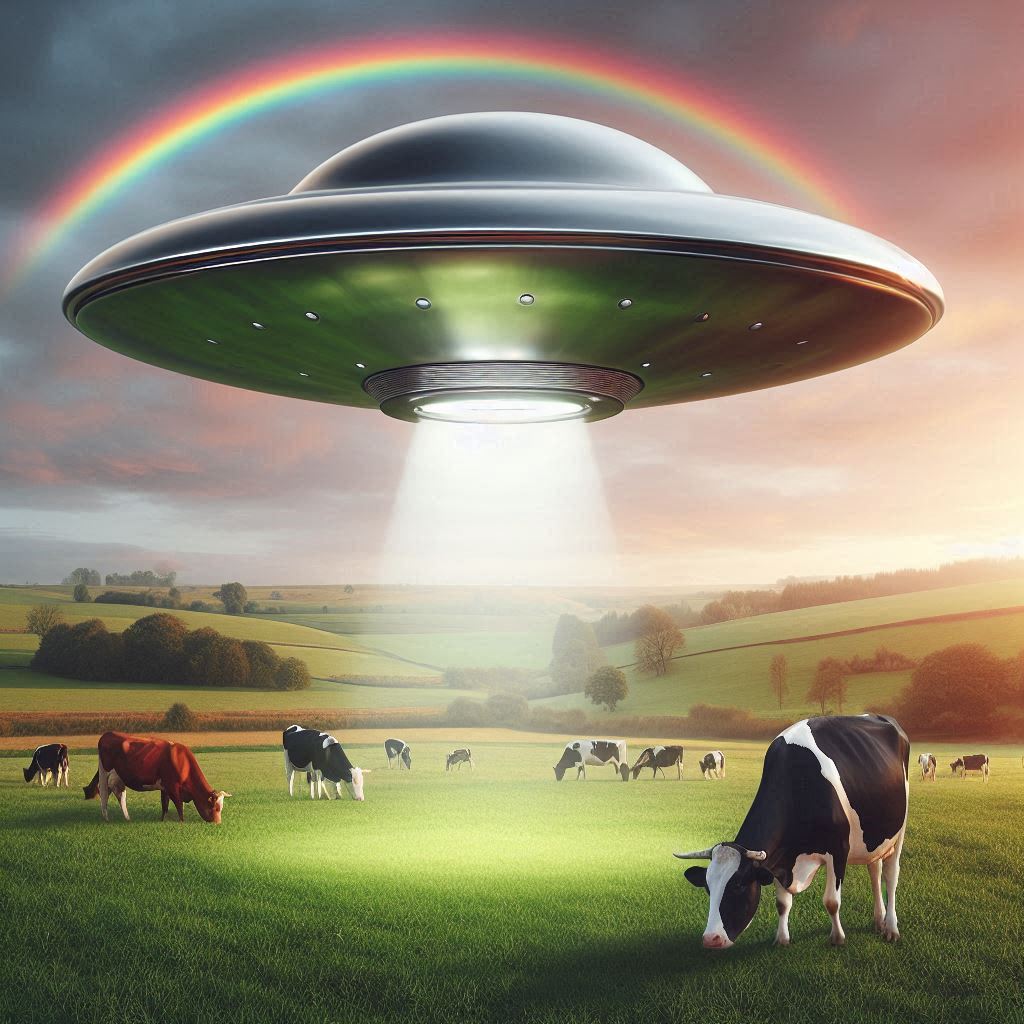Unidentified Flying Objects (UFOs) or Unidentified Aerial Phenomena (UAPs) have long fascinated humanity, bridging the gap between science fiction and reality. Over decades, sightings, whistleblower claims, and government reports have transformed UFOs from fringe conspiracy theories into topics of serious global discussion. Are UFOs a sign of extraterrestrial life? Could they be advanced technology from Earth? Or are they simply misunderstood natural phenomena?
This piece investigates deep into the evolving narrative of UFOs, examining the evidence, skepticism, and what lies ahead in humanity's quest for answers.
A Historical Perspective on UFOs
While the UFO phenomenon is often associated with the 20th century, it has historical roots stretching back millennia. Ancient cultures frequently depicted flying objects in their art and literature. From "vimanas" in ancient Indian texts to celestial chariots in the Bible, these accounts suggest that unidentified phenomena have intrigued humanity for centuries.
In modern history, the UFO narrative gained traction in 1947 when pilot Kenneth Arnold reported seeing nine "flying saucers" near Mount Rainier, Washington. This sighting was followed by the infamous Roswell incident, where an alleged crash of a "flying disc" sparked widespread speculation about extraterrestrial contact. While the U.S. military claimed it was a weather balloon, the incident cemented UFOs in public imagination.
The Role of Government in the UFO Narrative
Government involvement in UFO investigations has fueled both curiosity and suspicion. In the United States, the Air Force's Project Blue Book (1952-1969) analyzed over 12,000 UFO sightings. While most were explained as misidentified aircraft, weather balloons, or natural phenomena, 701 cases remained unexplained.
Fast forward to recent years, and governments have become more open about their UFO investigations. In 2020, the Pentagon declassified three Navy videos showing unidentified objects exhibiting extraordinary flight capabilities. These videos, known as "Gimbal," "Go Fast," and "FLIR1," reignited public interest and led to the establishment of the All-domain Anomaly Resolution Office (AARO) to study UAPs more systematically.
In 2024, whistleblower testimonies before Congress made headlines. Experts alleged that the U.S. government has operated secret programs to reverse-engineer alien technology and even recovered "non-human biologics" from crash sites. While these claims lack definitive evidence, they underscore the need for transparency and accountability in UFO research.
The Science Behind UFOs
From a scientific perspective, many UFO sightings have plausible explanations:
-
Natural Phenomena: Atmospheric phenomena like ball lightning, meteors, and auroras can be mistaken for UFOs. Optical illusions caused by weather conditions or light refraction also contribute to misidentifications.
-
Human-Made Objects: Advanced drones, experimental aircraft, and even commercial satellites often mimic the erratic movements attributed to UFOs.
-
Cognitive Bias: The human brain is wired to recognize patterns, even when none exist. This psychological tendency can lead to exaggerated interpretations of ordinary events.
However, a small percentage of sightings defy these explanations. These cases often involve highly credible witnesses, such as military pilots, and feature objects demonstrating capabilities far beyond current human technology—such as hypersonic speeds without sonic booms, abrupt changes in direction, or hovering without visible propulsion.
The idea that UFOs are extraterrestrial spacecraft remains both thrilling and controversial. Advocates point to:
- Witness Testimonies: Pilots and military personnel often describe UAPs as "beyond anything we've ever seen."
- Unexplained Flight Capabilities: Some UAPs exhibit behaviors inconsistent with known physics, such as defying gravity or moving seamlessly between air and water.
- Historical Consistency: Similar descriptions of "craft" and "beings" appear in ancient art and folklore across cultures.
Yet, skeptics highlight the lack of definitive proof. Despite decades of investigation, no alien craft or technology has been publicly verified. Most scientists argue that extraordinary claims require extraordinary evidence—something that has yet to emerge in the UFO debate.
Recent Developments in UFO Research
- Public Hearings and Whistleblowers
In 2024, a congressional hearing featured testimony from retired military officers and researchers. Claims ranged from secret U.S. programs involving reverse-engineered UAP technology to allegations of global competition over such advancements. Witnesses called for greater transparency, citing instances where evidence and records allegedly disappeared mysteriously
- International Collaboration
UFO research is no longer confined to the U.S. Countries like Brazil, Japan, and Russia have also documented and investigated sightings. The push for global cooperation may lead to a better understanding of these phenomena.
- Technological Advances
As technology improves, so does our ability to detect and analyze UAPs. High-resolution satellites, AI-powered data analysis, and advanced radar systems could provide clearer answers in the future.
Why the UFO Debate Matters
The implications of UFOs extend far beyond the question of extraterrestrial life. If these phenomena represent advanced technology—whether human or alien—they could revolutionize science, defense, and industry. Alternatively, understanding UFOs could help address gaps in our knowledge of natural phenomena and human perception.
Moreover, the UFO debate raises philosophical questions about humanity's place in the universe. Are we alone? If not, how should we prepare for potential contact with intelligent life?
The future of UFO research hinges on transparency, collaboration, and scientific rigor. Governments must declassify more information, while researchers must remain objective and open-minded. Whether UFOs are extraterrestrial visitors, cutting-edge technology, or misinterpreted natural events, unraveling their mystery could lead to groundbreaking discoveries.
As humanity continues to explore the unknown, one thing is certain: UFOs challenge us to expand our horizons and question what we think we know about the universe.
UFOs occupy a unique intersection of science, mystery, and imagination. While definitive proof of extraterrestrial life remains elusive, the growing openness in UFO discussions signals a shift in how we approach this enigmatic phenomenon. As investigations continue, one can only hope that the answers—whatever they may be—will illuminate our understanding of the cosmos and our place within it.

Comments
Edit Comment
×